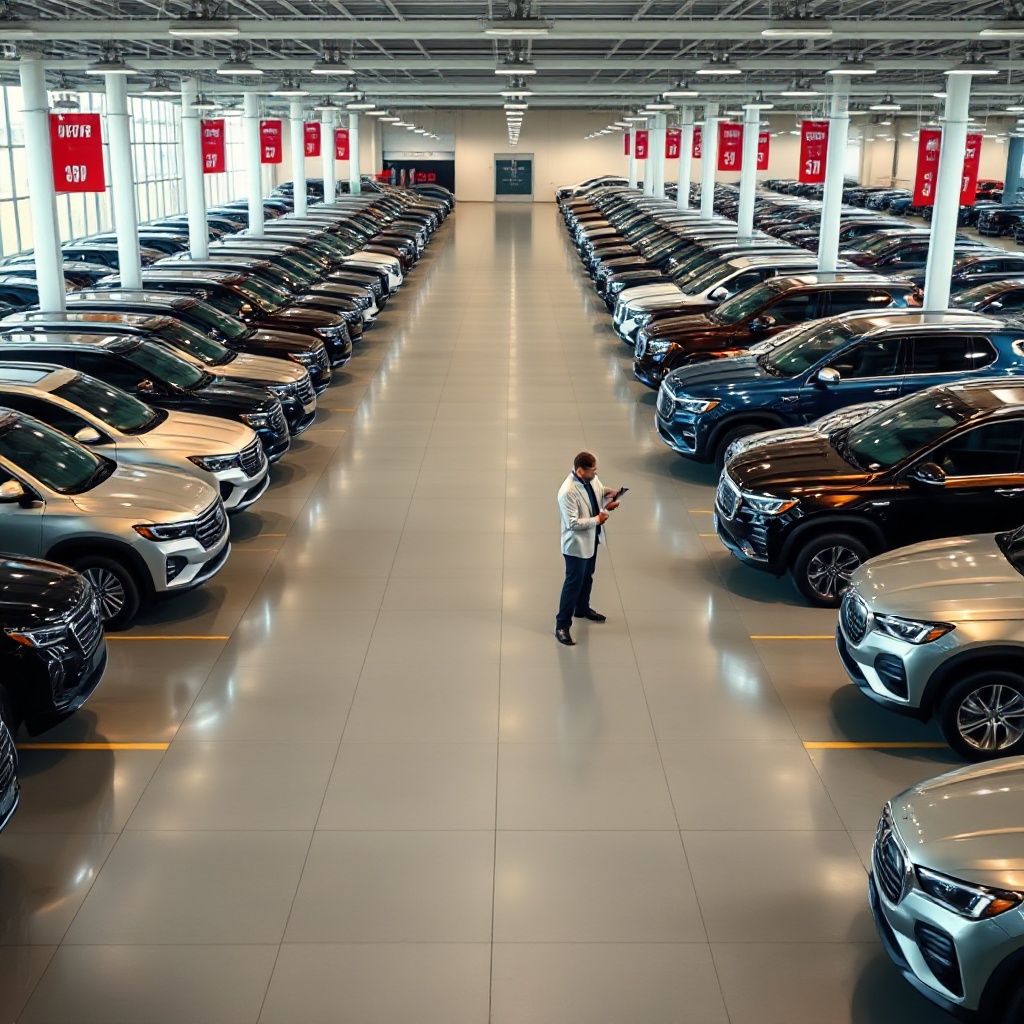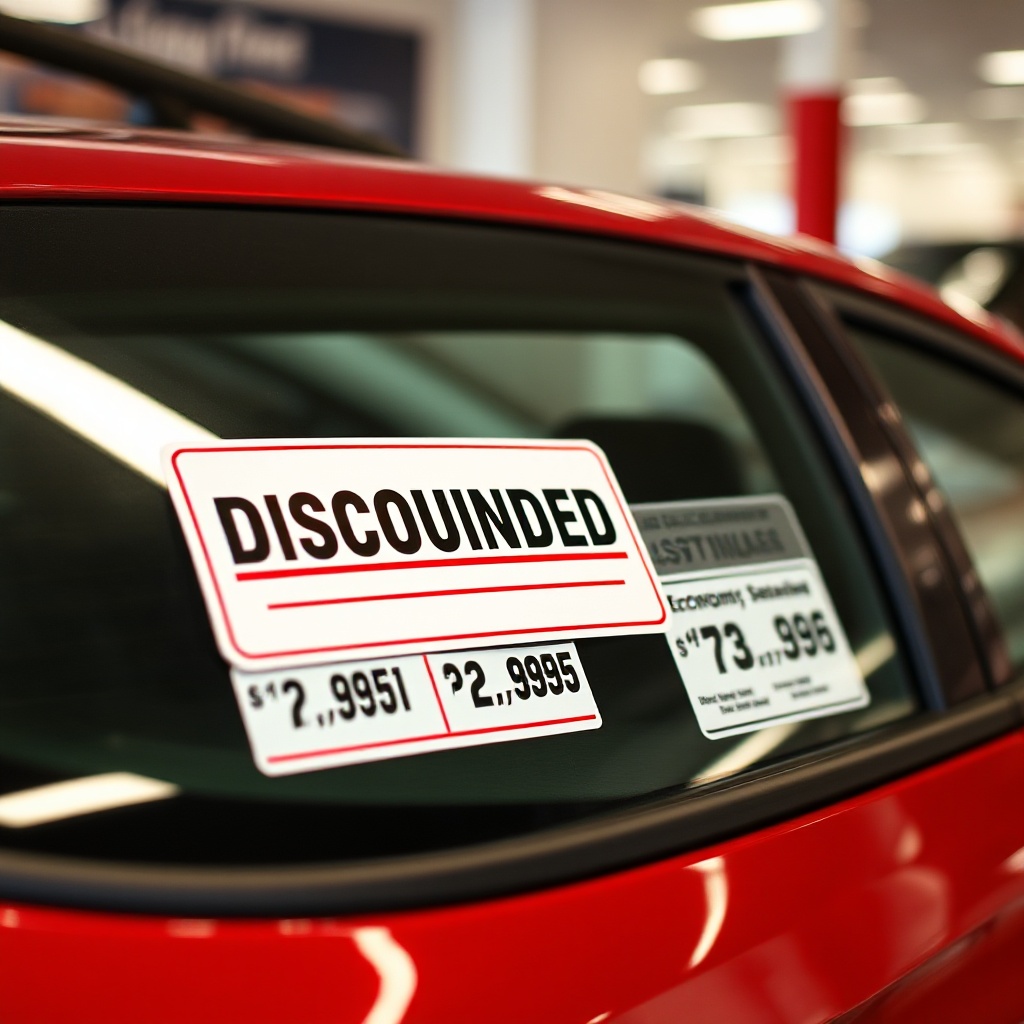
New vehicle prices near $50,000 create affordability crisis as budget cars vanish from US market, forcing consumers to adapt in a transformed auto landscape.

Drivetech Partners
The U.S. auto market is experiencing an unprecedented affordability crisis as new vehicle prices hover near record levels while affordable options rapidly disappear from dealer lots. With the average new car transaction price reaching $48,699 in June 2025—more than $10,600 higher than just five years ago—and tariffs driving costs even higher, mainstream cars have transformed into luxury purchases for many American households.
Key Takeaways
New car prices have reached an average of $48,699 in June 2025, nearly $50,000 and over $10,600 higher than five years ago
The implementation of 25% tariffs on auto imports has further driven up prices by 10-15% on affected vehicles
The discontinuation of the Nissan Versa marks the end of sub-$20,000 new cars in America as affordable options vanish
Automakers are increasingly abandoning budget-conscious consumers to focus on high-margin luxury vehicles and trucks
Even the used car market offers little relief with average prices at $25,547—higher than many new cars cost just a few years ago

Auto Market Affordability Crisis: How New Cars Became Luxury Items
The average new vehicle now costs nearly $50,000—a figure that would have been shocking just five years ago. At $48,699 in June 2025, prices have retreated slightly from the December 2022 peak of $49,929, but remain substantially higher than pre-pandemic levels. April 2025 saw a particularly troubling development with prices spiking 2.5% month-over-month, representing the sharpest one-month increase since April 2020.
This dramatic price escalation has effectively transformed what were once everyday purchases into luxury items. The median household income simply hasn't kept pace with these increases, making new vehicles increasingly out of reach for average consumers. Manufacturers have responded not by addressing affordability concerns, but by doubling down on high-margin vehicles that cater to wealthier buyers.
Tariffs Deliver Another Blow to Auto Affordability
As if the existing pricing trends weren't challenging enough, the implementation of 25% tariffs on all auto imports beginning April 3, 2025, has dealt another significant blow to affordability. These tariffs have directly increased prices on affected vehicles by 10–15%, while even vehicles not fully subject to tariffs have seen price jumps of approximately 5%.
The ripple effects extend beyond immediate price hikes. The tariffs have created production slowdowns, inventory pileups at ports, and forced some manufacturers to freeze production entirely. Mainstream brands that rely heavily on imported components face disproportionate pressure, further reducing the availability of affordable options in the market.

The Disappearing Sub-$25,000 New Car
Perhaps the most tangible sign of the affordability crisis is the vanishing of budget-friendly vehicles from dealer lots. The discontinuation of the Nissan Versa marks the end of the last new car under $20,000 in the United States, leaving the Nissan Sentra as the most affordable new option—at a considerably higher price point.
For 2025 alone, automakers have discontinued 18 vehicles, including:
12 sedans (including the Nissan Versa, Chevrolet Malibu, and Subaru Legacy)
4 SUVs
2 trucks
This trend disproportionately affects entry-level and economy models, which traditionally served as gateway vehicles for first-time buyers and budget-conscious consumers. The once-common sub-$25,000 new car has become an endangered species in U.S. showrooms.

Surviving Affordable Options: A Shrinking Category
For buyers still seeking more affordable new vehicles, options are increasingly limited. Subcompact SUVs, averaging $33,570 in 2024, remain among the more accessible entry points to new car ownership. However, even these segments are shrinking in availability as manufacturers shift focus to higher-profit models.
The remaining affordable choices are mostly limited to compact and subcompact SUVs, and their supply is also thinning. This dynamic is pushing mainstream buyers toward either significantly higher-priced vehicles or the increasingly expensive used market. The concept of an "affordable" new car has been redefined upward, leaving many potential buyers priced out of the market entirely.
Luxury Focus: Automakers Abandon Budget Buyers
Faced with profit pressures and shifting market dynamics, mainstream automakers have increasingly pivoted to premium segments. Interestingly, some luxury brands like Tesla, BMW, Audi, Cadillac, and Lexus have seen modest price drops, while entry-level models across all brands are being eliminated from lineups.
Full-size pickups and luxury SUVs—some exceeding $100,000—remain popular and profitable despite their high prices. This stark contrast highlights the bifurcation of the market, with manufacturers catering to the upper end while neglecting affordable transportation needs. Tesla's rise to become a top-10 U.S. luxury brand further illustrates the market's upscale shift.
Used Cars: No Longer the Affordable Alternative
Traditionally, used vehicles offered a reliable escape valve for buyers priced out of the new car market. That safety net has significantly weakened, with average used car prices remaining high at $25,547 in June 2025. This makes even secondhand options less accessible than ever before.
The used market has been driven up by the same factors affecting new car prices: limited supply and increased demand. In a particularly troubling development, many used vehicles now cost more than new cars did just a few years ago. The ripple effects of new car pricing and production decisions have transformed the entire automotive marketplace, leaving few refuges for budget-conscious consumers.
Return of Incentives: Too Little, Too Late?
There is a small silver lining as dealers have begun offering more incentives, including rebates and low-cost financing. These incentives now account for approximately 8% of average transaction prices in 2024—a significant improvement from just 2% in 2022.
However, this remains well below the pre-pandemic average of 10%, and the benefits are not evenly distributed across all segments. Despite the increased incentives, overall vehicle affordability is still substantially worse than before COVID-19. For many consumers, these modest discounts and financing offers do little to offset the fundamental affordability challenges in today's market.
Consumer Options in a High-Price Market
Budget-conscious buyers face increasingly limited choices for new vehicles. In response, many consumers are keeping their vehicles longer, with the average age of cars on U.S. roads reaching a record high. This represents a practical adaptation to market realities but comes with increased maintenance costs and safety concerns for aging vehicles.
Alternative strategies for consumers include:
Considering certified pre-owned vehicles, which offer some warranty protection
Exploring leasing options, which can lower monthly payments (though not overall costs)
Postponing purchases when possible, hoping for market corrections
Looking at remaining affordable segments like compact SUVs
Considering less popular but still-available sedan models
None of these options fully addresses the fundamental affordability challenges, but they represent the limited choices available to consumers navigating today's difficult market.
Sources
CarEdge: New Car Price Trends in 2025
CarEdge: Used Car Price Trends for 2025
Kelley Blue Book: When Will Car Prices Drop?
Investopedia: Four Market Trends to Track if You're Thinking About Buying a Car in 2025




